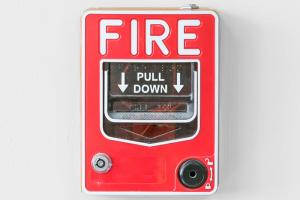Maintaining life safety egress in corridors
The COVID-19 pandemic introduced new challenges into an already challenging space: egress corridors. Corridors are a key component for egress and patient relocation during an emergency event. Yet, on a daily basis, they are also used for patient transport, environmental services procedures, monitoring equipment and more.
Building and life safety codes stipulate corridor clear width requirements based on the occupancy of the space and the occupant load. Cluttering the corridor with beds, equipment, personal protective equipment (PPE) carts and other items reduces the clear width and increases risk to occupants during an emergency. During the pandemic, some facilities placed monitoring equipment outside the patient room to allow staff immediate access without increased risk of exposure. Emptying the corridor may not be feasible given the ever-evolving demands on the health care environment.
To help mitigate risk while satisfying infection control needs, facilities can create PPE stations between rooms rather than providing a cart for each room, ensure all equipment and/or PPE carts have wheels, limit items to one side of the corridor, and ensure all areas with items in the corridor are fully sprinkler protected.
PPE carts in corridors are not prescriptively allowed by code. In the event of a fire, staff could relocate items in the corridor into patient rooms to clear the egress path. Staff should ensure a space in each room is kept clear for quick relocation. They should also assess life safety risk versus infection control risk and document mitigation practices through a risk assessment.
Hand hygiene also can impact fire safety. Always consider the limit on alcohol-based hand sanitizer before adding dispensers outside each patient room, as only 10 gallons per smoke compartment are permitted outside of a storage cabinet. One dispenser installed inside each room can be exempt from the 10-gallon total. (See the National Fire Protection Association’s NFPA 101®, Life Safety Code®, for size limitations.)
Although no code accounts for all the challenges of a pandemic, these strategies to mitigate the risk of additional items in the corridor contribute to life safety.
Allison C. Ellis, PE, project manager at Koffel Compliance LLC.




